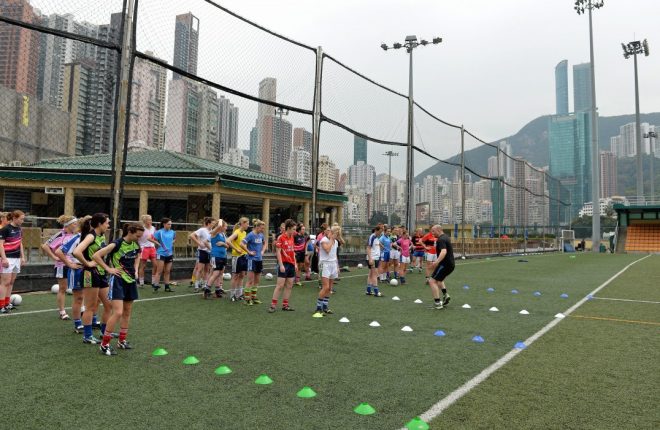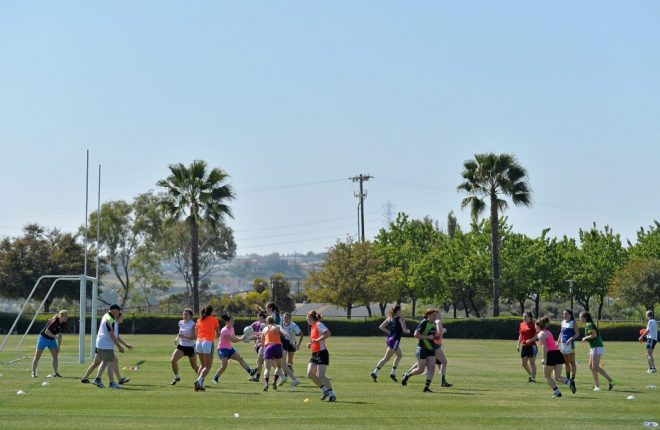
A bad training session can make your players worse
The stages to building the optimal training session. When I design training sessions in any sport, there are three things I consider.
– First what is the tactical (and/or skill) response I’m trying to have the player experience?
– Second what is the physical response I’m hoping to encourage?
– What kind of emotional environment do the players need for this?
This isn’t the way I’ve always trained teams. I’ve learned though having worked in the NFL, Premier League, International and club Rugby as well as AFL, that to build intelligent players it’s the best approach. Some coaches think more is better. More is not better. More is more. Better is better. Here are the initial guidelines I use to design training sessions for Gaelic Games. There are basically six types of things you can do in training. Four of them are drills, and 2 are games. You can do Conditioning Drills, Rudiment Drills, Technical Drills and Tactical Drills. After this you can do Small Sided Games or Tactical Games.
Some coaches think that every minute you train your players are at least getting a little better. This is not completely true.
Remember that every with every minute of bad training your players are getting worse. So in other words, one bad training session makes a player worse.
Jose Mourinho, Andre Villas-Boas, Eddie Jones, Graham Henry, Steve Hansen and other great coaches know this. For this reason we need to optimize the time spent training. The more games you play the smarter your players will be. The fewer the games, the more diligent they will be, but less resilient and less the ability to concentrate and make best decisions. Over the years of working with great fitness coaches here and abroad like Ashley Jones, Bryce Cavanagh, Martin Kennedy, John McCloskey, Dean Benton and many others I’ve may own way of designing training. We can narrow most training design structures to the following.
> Rudiment Drills
These drills are usually a basic movement skill, an isolated action, they are simplistic (non-complex) and usually have are a repetition of a learned and perfected movement. There is no player contact and there is no real cognitive involvement of significance. Think of the most basic kick passing drill you can use.
> Conditioning Drills
These are non cognitive (no thinking needed), there is no decision-making, there is no technical element and no tactical aspect to it. They are purely running or fitness based.
> Technical Drills
These have a basic movement skill with an integrated technical action like a kick pass. It is in an isolated context, but can be a series of combined technical skills, such as a hand passing drill and kick pass with 2 or 3 others. They may be complex actions and executing a learned technical movement, involving another player but with some cognitive involvement. So this is where there is more use of skills, but with a little pressure applied to the man in possession.
> Tactical Drills
This is the last stage before game design, so they have repetition of a single game movement pattern, such as with some evasion. It can have an integrated technical and movement action, but in an isolated tactical context. There is some low level decision making, but not contextual. It is the repetition of learned tactical movement with multiple player involvement & interaction and there is cognitive involvement. Something like a 3 vs 3 fist passing drill or passing drill. So you can train the players to develop a tactical knowledge in a drill like this.
> Small Sided Games
These are, as the names suggest, small-sided games played in smaller spaces with fewer men. There are a lot of decisions and actions. There are no specific rules, and there is no specific focused intent in the game design. Full game rules apply. Players develop and improve the ability to play the game.
> Tactical Games
Tactical Games are similar to small-sided games but they are designed to elicit a specific response. So, you create a game but you have one rule that demands the players must adapt in a tactical way. Something like saying that no score counts if an attacking midfielder is still in his own half of the field. This makes the player focus on his tactical awareness.
> Putting it together
If you really want to develop players, 80% or 90% of your training will be selected from the last two groups. The first four choices you can use for warm ups. The rest of the time, with all age groups you allow discovery learning. Smart coaches can manipulate the game design to get the effect you want.
Understand the focus on games is to develop the unconscious brain. What I mean is, we are really trying to develop instinct. In games, players don’t have time to think, so they are really acting on instinct. I never restrict soloing or how long someone can hold the ball. I never use the one-hop, one-solo mantra. As a coach you teach the player when to carry and when not to in the games you play, you don’t place a restriction on them from the start. Let the game teach them.
> The importance of the Experience
Unlike many people, training sessions for me are about creating an experience. I told you before that Sean McCague would emphasize the fact that only the player could discipline themselves. To this point, the aim of training is to create an experience that encourages or elicits a subliminal response from a player.
You train animals, you teach maths, you experience sport. You can only allow players to develop habits through sporting or training experiences. This is how the greatest coaches ‘train’ the best players. Smart coaches will design games to encourage a habit in certain players and groups of players. For example if I want to train the forwards to recognize when to kick from distance, I wouldn’t even speak to them. I’d speak with the backs and tell them how I wanted them to play to force the forwards to kick from distance. This way the forwards will learn how to learn and by default have an experience through which they learn to ‘kick from distance’.
> Fitness always follows Tactics
The type of fitness is the second thing I will plan for. By just manipulating work:rest ratios I can get a training effect I need (speed, endurance, reaction etc).
For example on a Sunday 1 hour practice, we can go for two 30 minutes of football or we can go for 20, 20 and 20. We can do 20, 20, 10 and 10. Or we can just do 20, 10 and 10 with long rest. Every one of these will elicit a completely different fitness response – and I’ve not changed a game rule. I can give long rest and work for short blocks of work to develop speed. Or I can go for slightly longer to develop fitness. But either way I will always stop if the quality starts to suffer. If I want to develop endurance I’ll use larger spaces, for decision-making small spaces.
> Why I prioritize emotion
Lastly I consider the emotion of the session. Every coach must be aware if it’s a hard or soft session. Best learning is done in a safe environment, but you can still be hard or soft. The reason for this is to manage when you need to “bring the hammer” or “bring the cuddles”. This is the art of man management.
Planning training sessions are naturally much more complex and detailed than just that, but you can see the basic guidelines and how the sessions are constructed. Before we finish, lets go back and look at the questions again and look at two important things. First note the order of planning. The first thing is tactical ability and skill. That always is the priority. Fitness is secondary. To get good intelligent players you must plan for it. The fitness element is always secondary to the tactical ability.
Finally, read the language. I spoke about experience, I didn’t say I’d train anyone or make anyone. You create an environment and culture and you aim to elicit a response by providing a training experience.

Drills are important to improve basic skills, but also to integrate those skills into complex moves
Receive quality journalism wherever you are, on any device. Keep up to date from the comfort of your own home with a digital subscription.
Any time | Any place | Anywhere











